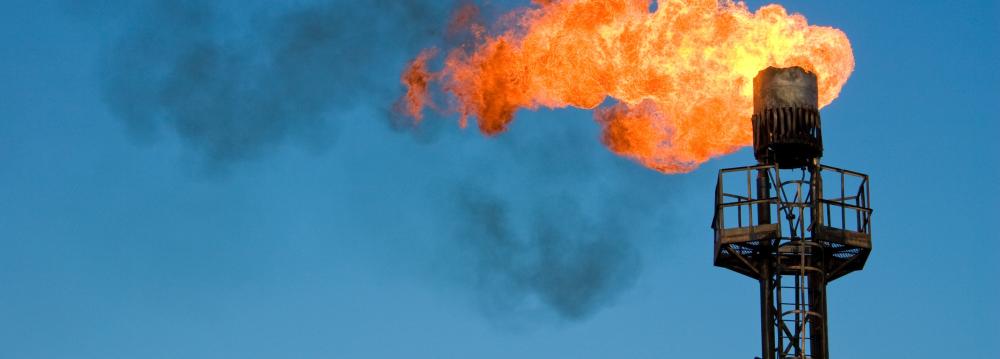Gas flaring is the main contributor of air pollution in oil-rich provinces and drives climate change, the director of the Center for Weather and Climate Change at the Department of Environment said.
Addressing a conference on Sunday in Masjed Soleyman, Khuzestan Province, Ali Asghar Rajabi added that cities such as Ahvaz in Khuzestan Province are reeling from air pollution caused by gas flaring.
"Gas flaring in Iran is increasing and if we fail to address it, the country will be in trouble in the coming years," he was quoted as saying by ISNA.
The official said Iran's production of 4 million barrels of crude oil a day results in the flaring of around 39 million cubic meters of gas.
For comparison, Saudi Arabia releases half of that amount while producing 10 million bpd. Warning against Iran's rising energy consumption and reliance on fossil fuels, Rajabi pointed to a recent report by the Iranian Fuel Conservation Company stating that by 2030, Iran's oil production will only be adequate to meet domestic demand.
"We'll end up having to import oil to meet the growing demand," he said.
"Energy consumption in Iran is three times higher than the global average," Nasrollah Seifi, managing director of IFCO, said.
"With a population of 80 million people, Iran's consumption rates in some energy sectors equal those of China with 1.3 billion people."
Iran's short-term goal, as outlined in the sixth five-year economic development plan (2016-21) is to reduce energy consumption index by half to 0.56, down from the current 1.12.
"To do that, we need to reduce our total CO2 emissions by 2.2 billion tons by 2021," Rajabi added. Iran's annual carbon dioxide emissions top 800 million tons, which—for the duration of the sixth economic development plan—comes out to 4 billion tons.
Indictment of Big Oil
Representatives of 195 countries, including Iran, signed a historic agreement in Paris last December to curb global emissions of greenhouse gases and limit the planet’s warming to under 2°C, preferably 1.5°C, by 2100.
Iran’s pledge is to decrease emissions by 4% in 13 years, but officials say with sufficient international aid, the country can reduce its emissions by 12%.
Iran accounts for 1.3% of global emissions, which is high compared to other countries because despite Tehran’s increasing emissions over the past few years, the economy has not developed as expected.
According to Iran’s Meteorological Organization, the country’s greenhouse gas emissions have increased by 3% in the past decade. More than 16,000 gas flares at oil production sites across the world result in about 350 million tons of climate-changing carbon dioxide emitted into the atmosphere every year.
Experts say the world's every-growing gas flaring figures is an indictment of the global oil and gas industry.
Oil producers often prefer to burn off gas associated with oil extraction activities (i.e. flaring) rather than invest capital in pipes and pumping stations to transport the gas to consumers. According to Climate Change News, in 2015, 147 billion cubic meters of natural gas were flared at oil production sites acrossd the world—more than enough to provide the current annual electricity consumption of the whole of Africa.
In the runup to the Paris conference on climate change in late 2015, a number of governments and oil and gas production companies agreed to an initiative designed to eliminate gas flaring by 2030. Whether the initiative bears results, however, remains to be seen.


